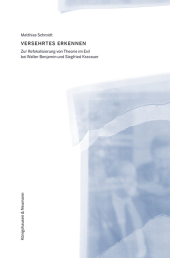
Lieutenants and Light
Mapping the US Army Heliograph Networks in Late Nineteenth-Century Arizona and New Mexico
- Publisher's listprice GBP 63.00
-
30 098 Ft (28 665 Ft + 5% VAT)
The price is estimated because at the time of ordering we do not know what conversion rates will apply to HUF / product currency when the book arrives. In case HUF is weaker, the price increases slightly, in case HUF is stronger, the price goes lower slightly.
- Discount 10% (cc. 3 010 Ft off)
- Discounted price 27 088 Ft (25 799 Ft + 5% VAT)
Subcribe now and take benefit of a favourable price.
Subscribe
30 098 Ft

Availability
Not yet published.
Why don't you give exact delivery time?
Delivery time is estimated on our previous experiences. We give estimations only, because we order from outside Hungary, and the delivery time mainly depends on how quickly the publisher supplies the book. Faster or slower deliveries both happen, but we do our best to supply as quickly as possible.
Product details:
- Publisher University of New Mexico Press
- Date of Publication 31 December 2025
- ISBN 9780826368409
- Binding Hardback
- No. of pages240 pages
- Size 229x152x22 mm
- Weight 429 g
- Language English 700
Categories
Long description:
Lieutenants and Light provides an accurate, detailed historical study of the U.S. Army’s use of the heliograph as a tactical means of communication and command and control in the desert environment of Arizona and New Mexico in the late nineteenth century.
The heliograph network in the Southwest, which began development in 1882, used mirror-based signaling devices to facilitate communication across remote outposts, forts, and detachments. Heliographs enabled soldiers to send messages over long distances using Morse code transmitted through sunlight reflections. During and immediately following the campaign against Geronimo in 1886, General Nelson A. Miles implemented a heliograph network that connected key locations from Nogales, Arizona, to Fort Stanton, New Mexico, enhancing command and control. Additional tests and expansions solidified the heliograph’s role as an essential military communication tool.
Reports from the officers tasked with establishing these stations and modern geospatial analysis have identified almost ninety networked heliograph stations established between 1882 and 1893, culminating in the greatest heliograph network ever built.
Many of the officers who helmed these stations went on to distinguished careers in the military, business, or public service. Some had served in the Civil War, and most were veterans of the Indian Wars. Almost a third of these young officers would go on to become general officers, several serving in leadership roles during World War I. Thus, the heliograph not only connected points across the Southwest but also linked a group of officers whose experience and leadership spanned from the Civil War through World War I.











